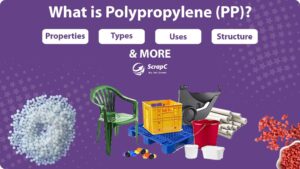The Versatile World of Polypropylene: A Material That Shapes Our Lives
When you think about the materials that make up the world around us, polypropylene might not be the first thing that comes to mind. Yet, this unassuming plastic is everywhere—from the food containers in your kitchen to the car you drive. Polypropylene, often referred to as PP, is one of the most versatile and widely used plastics in the world. In this blog, we’ll explore what makes polypropylene so special, its many uses, and why it’s such a popular choice across industries.
What Exactly is Polypropylene?
Polypropylene is a type of plastic made from propylene gas, a byproduct of fossil fuel refining. Through a process called polymerization, these gas molecules are transformed into a solid, durable material. The result is a lightweight, flexible, and incredibly strong plastic that can be molded into almost any shape.
You’ve probably encountered polypropylene in its raw form without even realizing it. It often comes as small, translucent pellets that manufacturers melt down and shape into everything from bottle caps to car parts.
Why is Polypropylene So Popular?

Polypropylene has a unique set of properties that make it stand out from other plastics. Here’s what makes it so useful:
- Lightweight Yet Strong: Despite being one of the lightest plastics available, polypropylene is surprisingly tough. This makes it ideal for products that need to be both durable and easy to handle.
- Chemical Resistance: It can withstand exposure to acids, bases, and other chemicals without breaking down, which is why it’s often used in lab equipment and cleaning product bottles.
- Heat Resistance: Polypropylene can handle high temperatures, making it perfect for microwave-safe containers and automotive parts that get hot.
- Moisture Resistance: It doesn’t absorb water, which is why it’s commonly used in food packaging and outdoor applications.
- Recyclable: Unlike some plastics, polypropylene can be recycled, which is a big plus in today’s eco-conscious world.
Where Do We Use Polypropylene?
The applications of polypropylene are almost endless. Here are just a few ways it’s used in everyday life:
- Packaging:
- Think of the yogurt tubs in your fridge or the clear lids on takeout containers. Polypropylene’s ability to keep food fresh and safe makes it a go-to material for packaging.
- It’s also used in flexible packaging, like chip bags, because it’s easy to seal and resistant to moisture.
- Automotive Industry:
- From bumpers to interior trim, polypropylene is a key material in cars. Its lightweight nature helps improve fuel efficiency, and its durability ensures parts last longer.
- Textiles:
- Ever wonder what those reusable shopping bags are made of? Many are crafted from polypropylene fibers. It’s also used in carpets, rugs, and even medical masks because it’s strong, stain-resistant, and easy to clean.
- Consumer Goods:
- Storage bins, furniture, toys, and kitchenware often rely on polypropylene because it’s affordable, durable, and safe for everyday use.
- Medical Field:
- Polypropylene’s ability to withstand sterilization makes it ideal for medical devices like syringes, surgical instruments, and trays.
The Environmental Side of Polypropylene
With plastic waste being a major global concern, polypropylene has an edge over many other materials. It’s fully recyclable, and many companies are working on ways to make it even more sustainable. For example, some are developing bio-based polypropylene, which uses renewable resources instead of fossil fuels.
Recycling polypropylene not only reduces waste but also saves energy, as it takes less energy to recycle it than to produce new plastic. This makes it a more eco-friendly option compared to non-recyclable plastics.
Why Choose Polypropylene?
There are plenty of reasons why polypropylene is a favorite among manufacturers and consumers alike:
- Affordability: It’s one of the most cost-effective plastics available, making it a budget-friendly choice for large-scale production.
- Versatility: Whether it’s being molded, extruded, or woven into fabric, polypropylene can adapt to a wide range of manufacturing processes.
- Durability: Products made from polypropylene are built to last, whether they’re being used in a high-temperature engine or a child’s toy.
- Safety: It’s non-toxic and safe for food contact, which is why it’s so widely used in packaging and kitchenware.
Looking Ahead: The Future of Polypropylene
As technology advances, so do the possibilities for polypropylene. Researchers are constantly finding new ways to enhance its properties, such as making it more resistant to UV rays or improving its biodegradability. With sustainability becoming a top priority, polypropylene is likely to play a key role in the development of greener materials and processes.
Final Thoughts
Polypropylene may not be the most glamorous material, but its impact on our daily lives is undeniable. From keeping our food fresh to making our cars lighter and more efficient, it’s a true unsung hero of the modern world. As we continue to seek sustainable solutions, polypropylene’s recyclability and versatility ensure it will remain a vital part of our lives for years to come.
So, the next time you pick up a plastic container or sit in your car, take a moment to appreciate the incredible material that makes it all possible—polypropylene.
Keywords: polypropylene uses, polypropylene properties, polypropylene applications, polypropylene recycling, polypropylene packaging, polypropylene automotive, polypropylene sustainability, thermoplastic polymer, polypropylene benefits, polypropylene raw material.
By weaving these keywords naturally into the content, this blog not only reads like human-written material but also improves its visibility for those searching for information about polypropylene.
